Submitted by WA Contents
The Why Factory's Studio Created 48 Futuristic Scenarios For Our Planet In The Next 100 Years
Netherlands Architecture News - Jul 09, 2018 - 08:19 18059 views
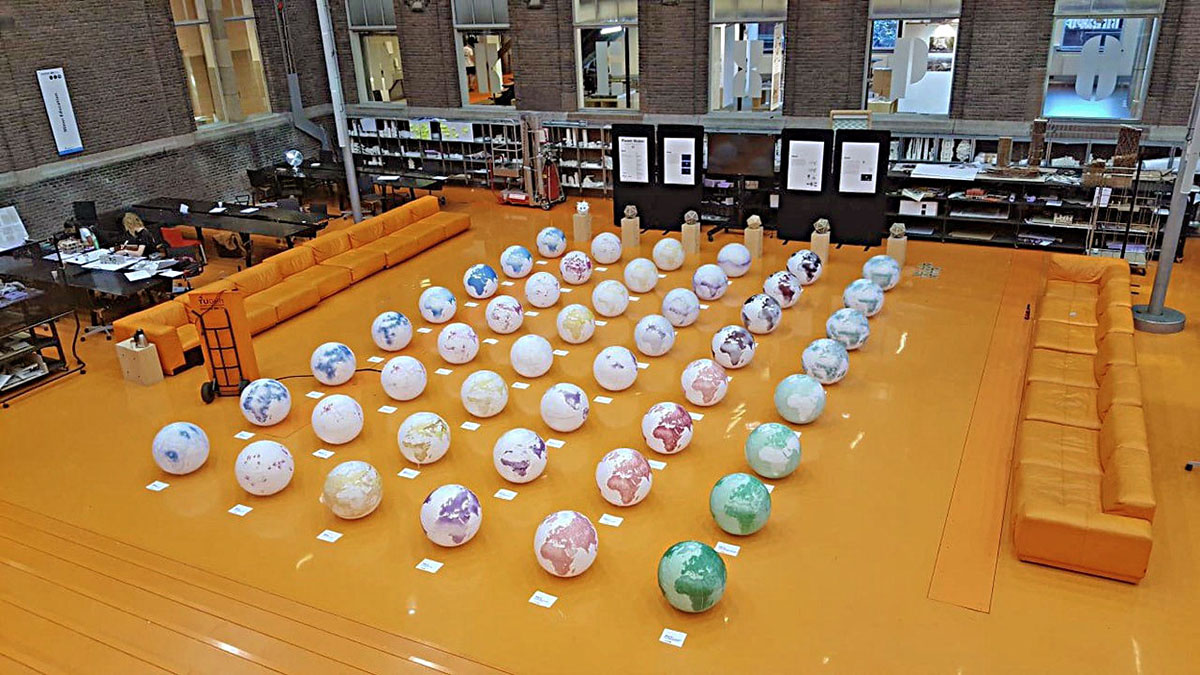
The Why Factory's Planet Maker studio has created 48 mini globes for our planet to understand how the futuristic possibilities and visions will shape the earth in the next century.
The Why Factory, led by Winy Maas of MVRDV, has collaborated with students from RMIT University in Melbourne and UTS in Sydney this term, the students created 48 heat-map globes that are painted by different planet visions. The results were derived from multiple ‘what if’s questions, the fantastic propositions were presented at TU Delft’s Orange Tribune last week.
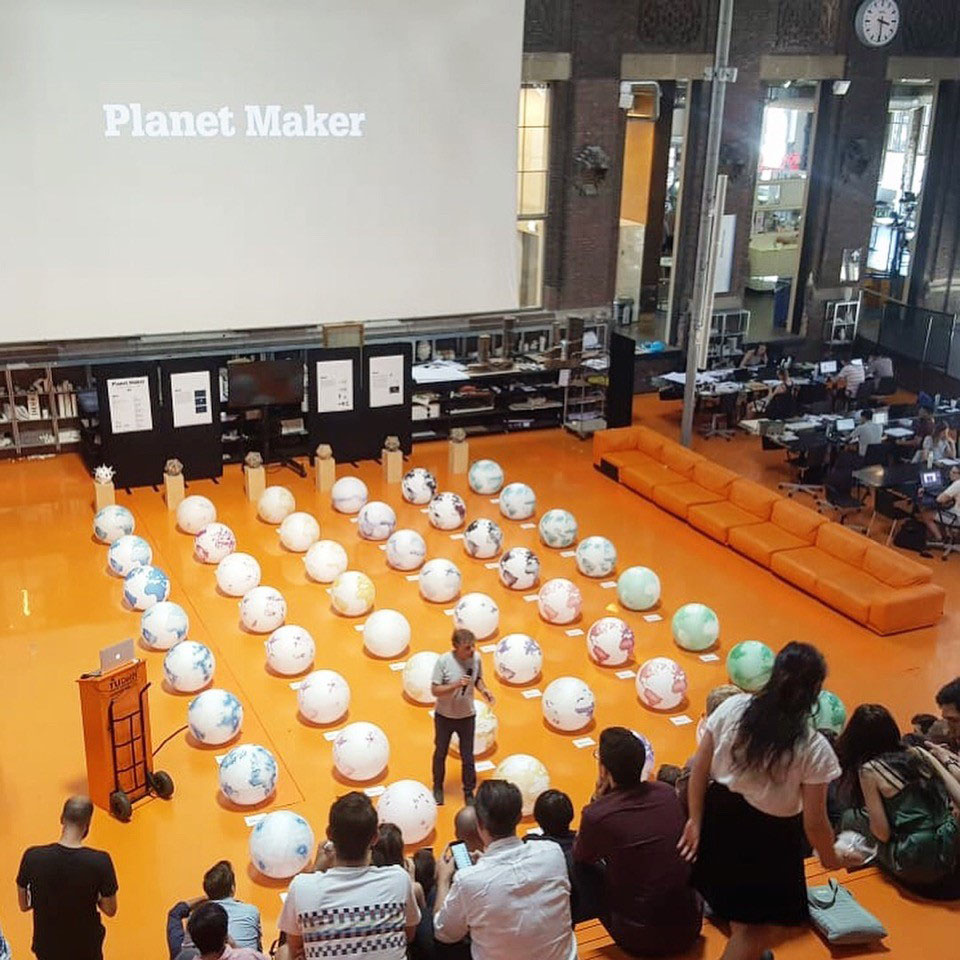
"As the planet moves into the Anthropocene era, a shift of focus moves from the world of architecture instead to an architecture of the world. Architecture has the potential to explore beyond its traditional disciplinary borders, the possibilities, repercussions and limits of organising the world in a different way, alongside finding ways to make better worlds," stated The Why Factory.
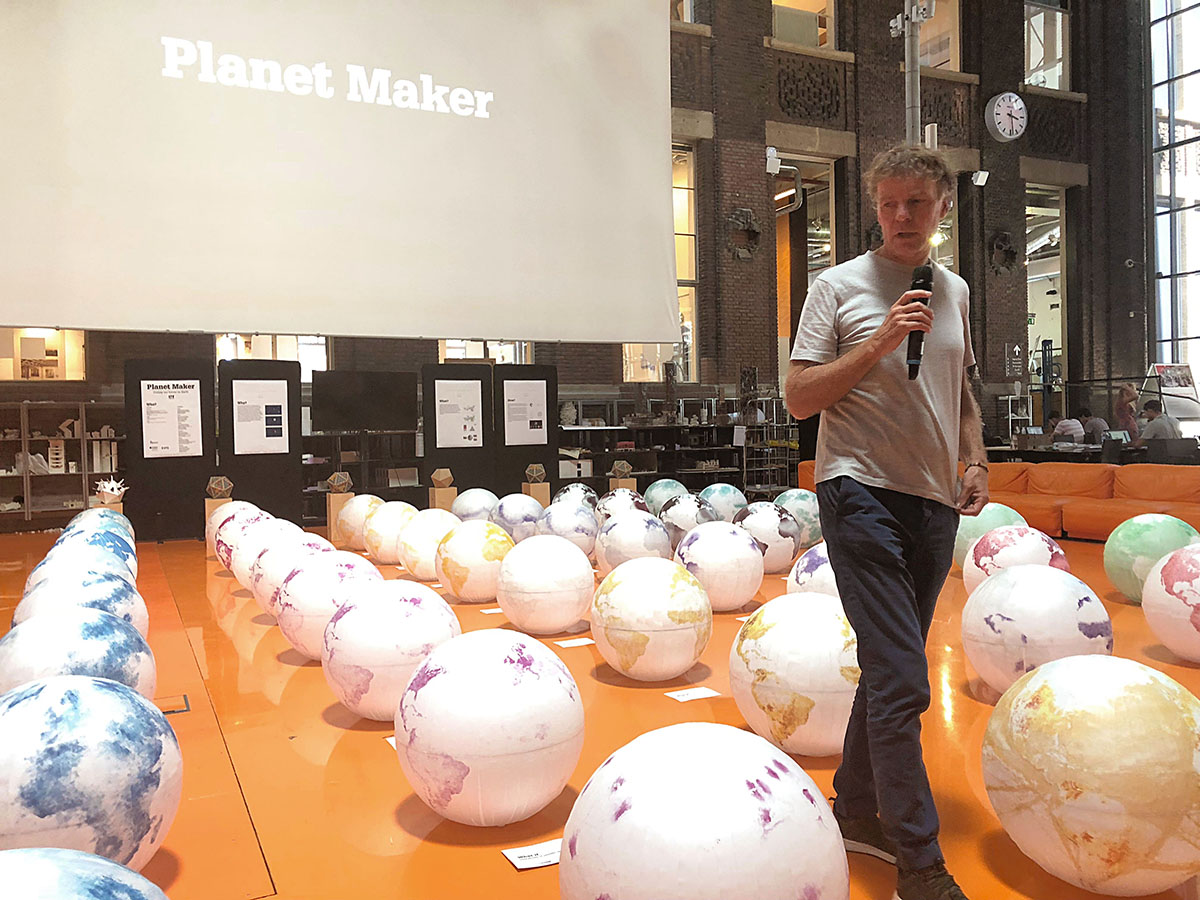
"Spatially as well as politically, taking into account how technology disruptions can change assumptions about the future of the world. Rather than a top-down approach, Planet Maker seeks to become a tool of exploration and simulation where ‘what if’s’ are tested to give guidance and inspiration for future planet makers. Iteration, variation and levels of intensity address the need to keep many options open for discussion."
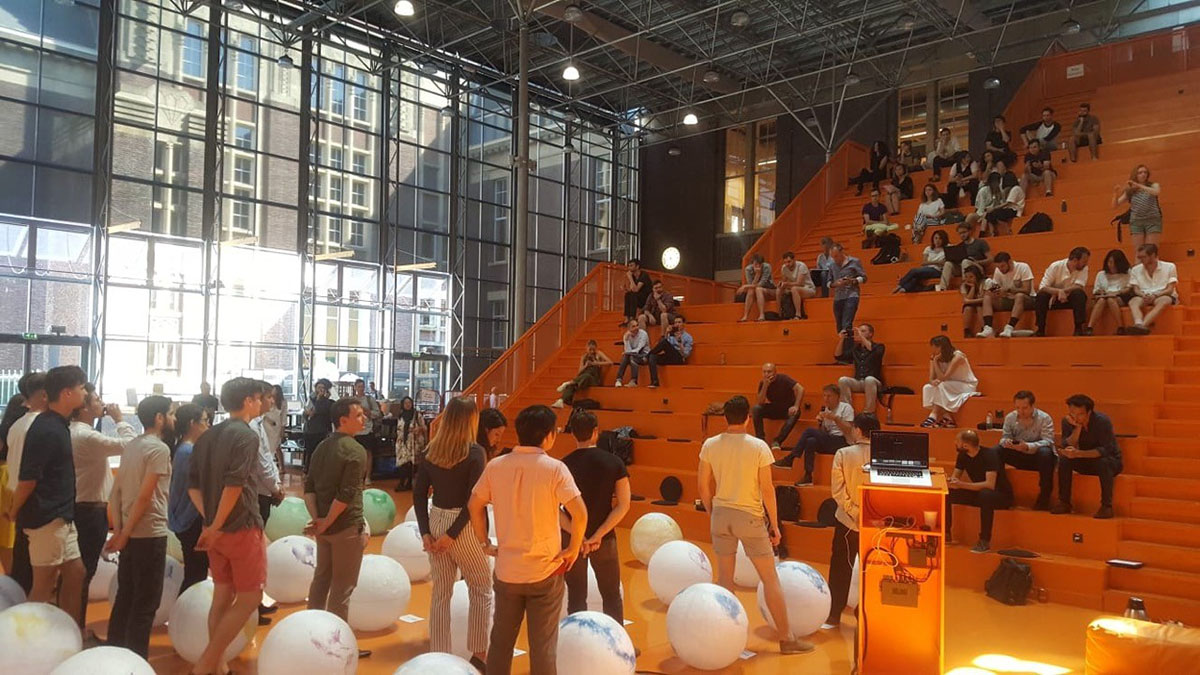
"The design studio questions whether we can make planets that are truly green, cool it down instead of continually contributing to heating it up," said Winy Maas, co-founder of MVRDV and Director of The Why Factory.
"Can we make planets that are truly green?" asked Winy Maas, the director of The Why Factory. "Can we make a planet that can cool instead of heat up? That can be open and free? That reduce poverty?."
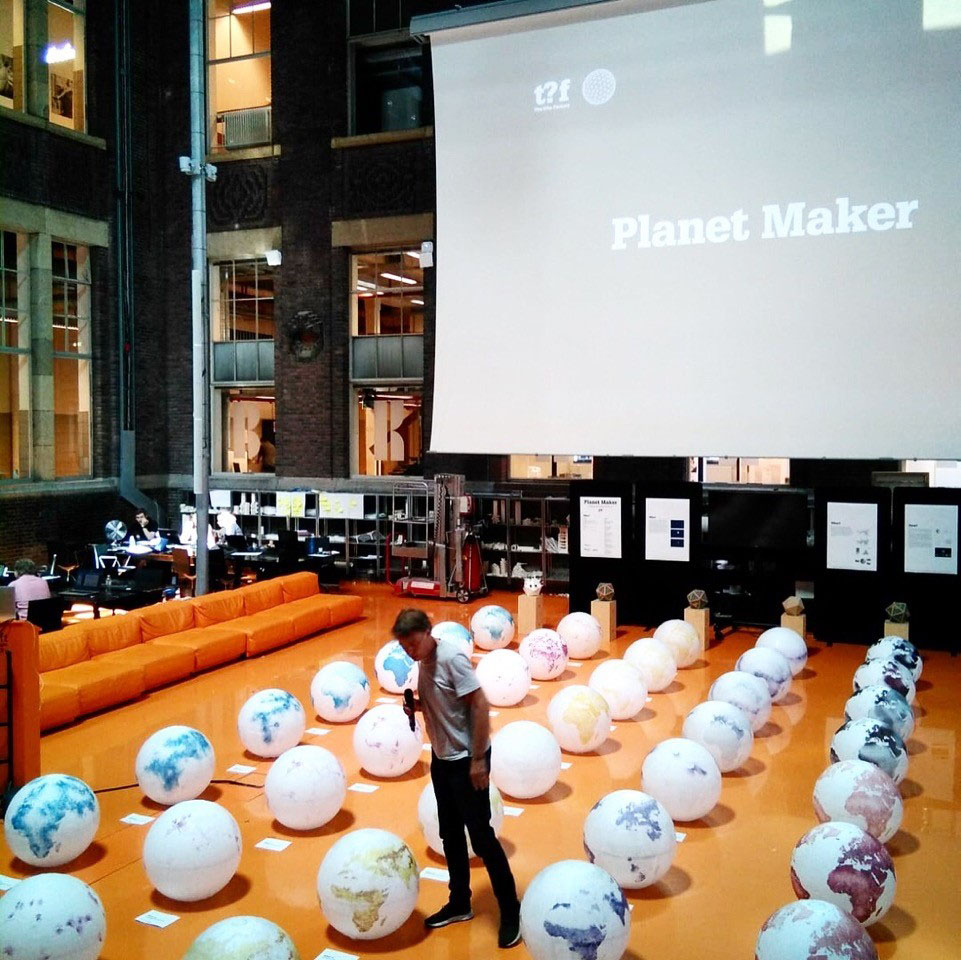
The future of planet Earth is explored through multiple ‘what if’s’ organized through six key lenses: Economy, Food, Energy, Mobility, Green & Society. These lenses take as their starting point an icosahedron and then a polyhedron of 320 triangles.
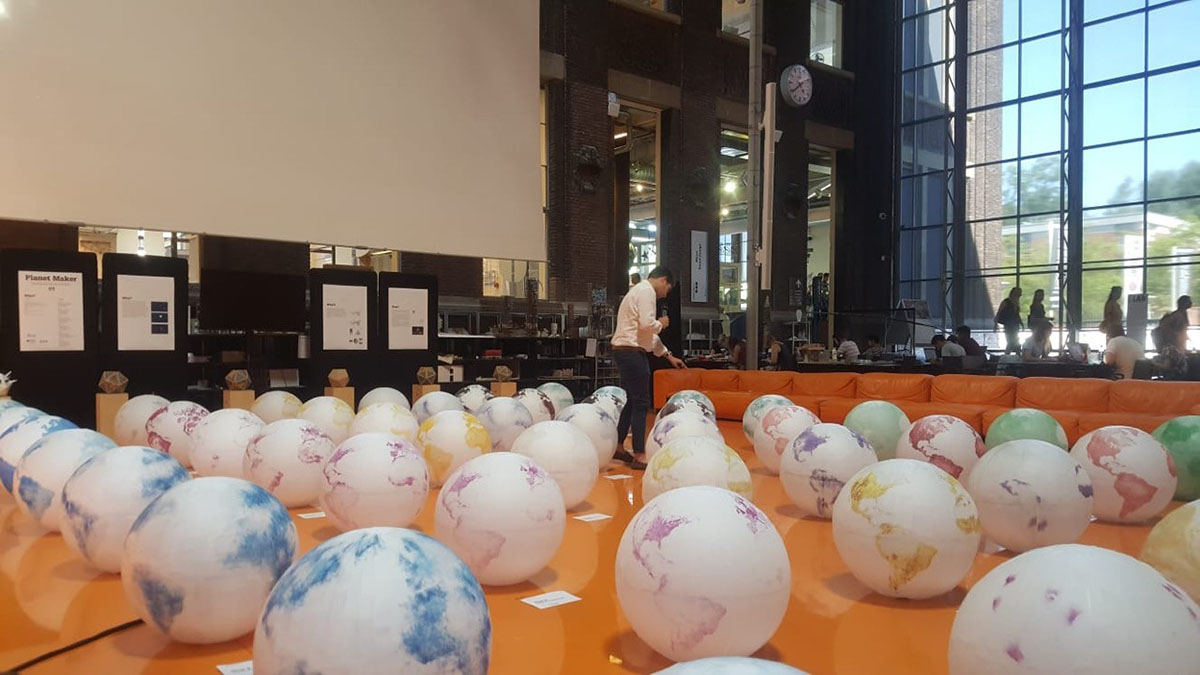
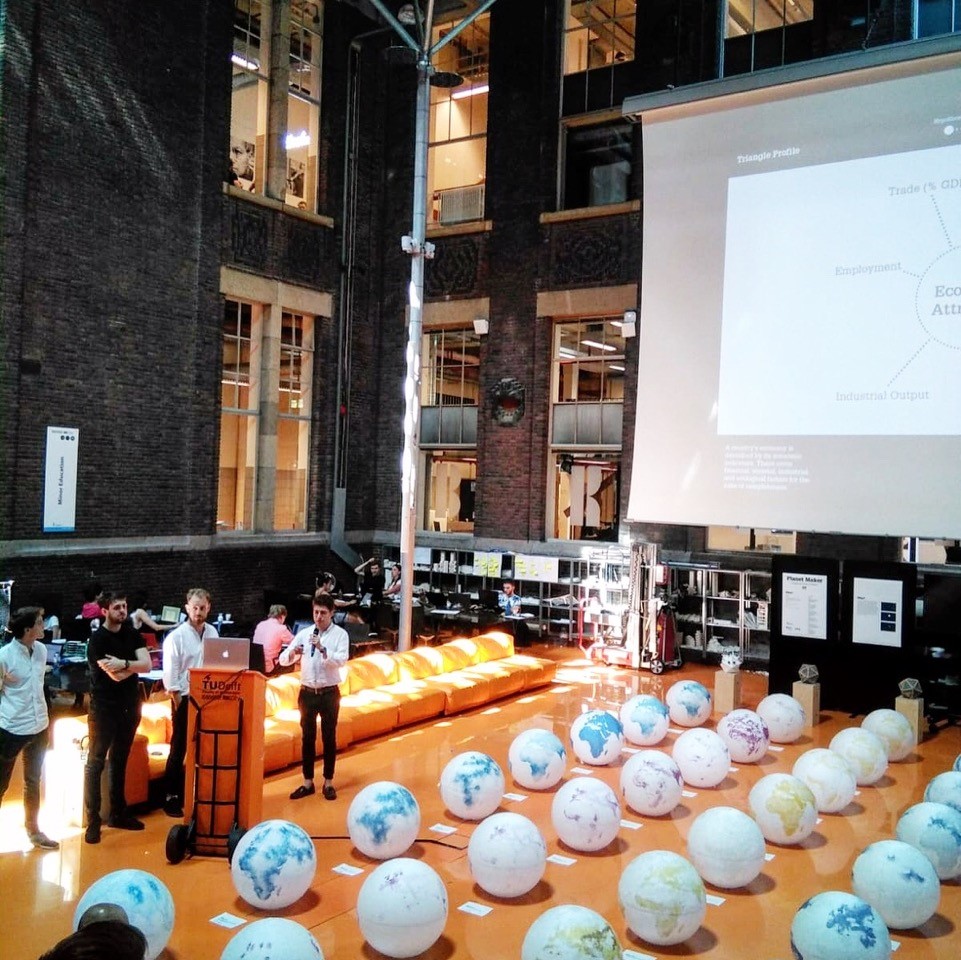
"Each triangle has three main attributes that are shared by all lenses: 1. land use, 2. population, 3. temperature. The future of the planet is simulated through scenarios that concentrate on exploring the coming 100 years. Each lens explores scenario making what if’s and their variants in time through a simulation game that uses scripting tools to manage massive quantities of data and parameters."
"For every lens, the teams have developed a specific method to tackle correlations between the most pressing subjects, yet all lenses are tested through a common database and a common output of land use."
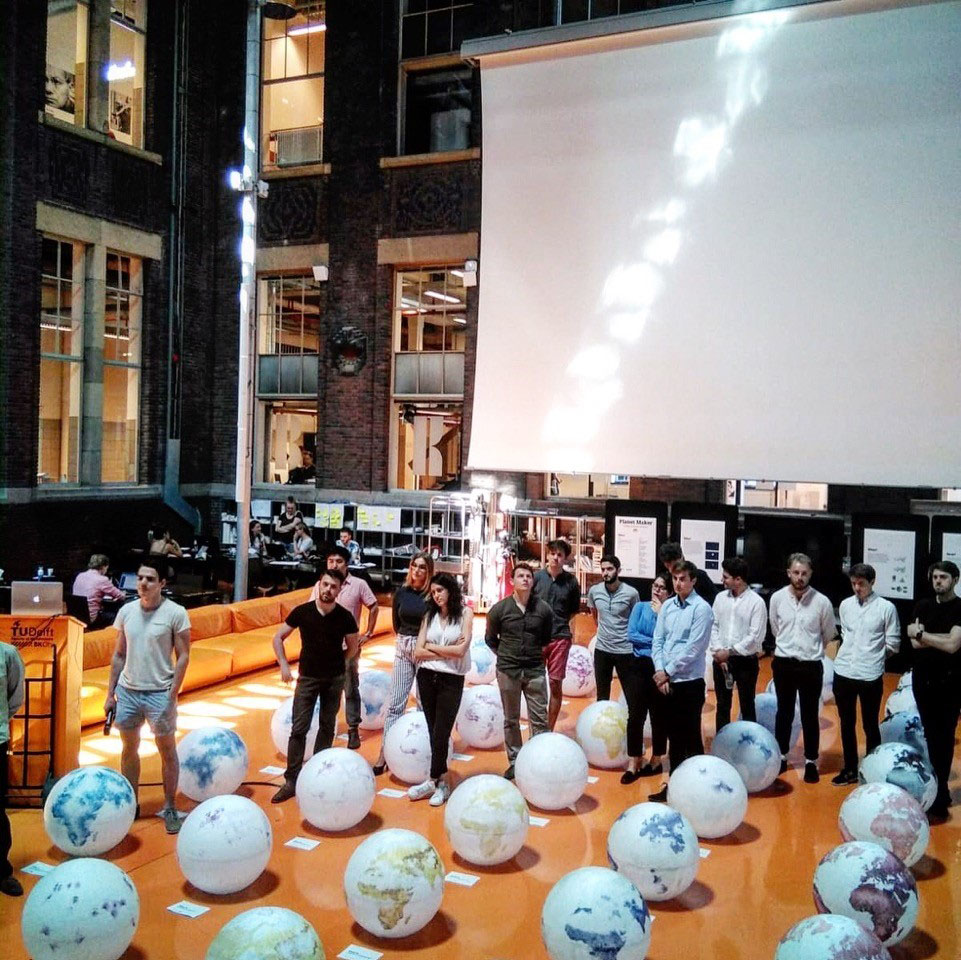
"Starting by giving an overview of the most challenging futures the lenses then go on to explore the ‘what if’s’ simulating the effects of precise policies on the overall triangulation of the world. These mini software’s inform and guide the creation of 48 heat-map globes that test ‘what if’s’ of the emerging Anthropocene."
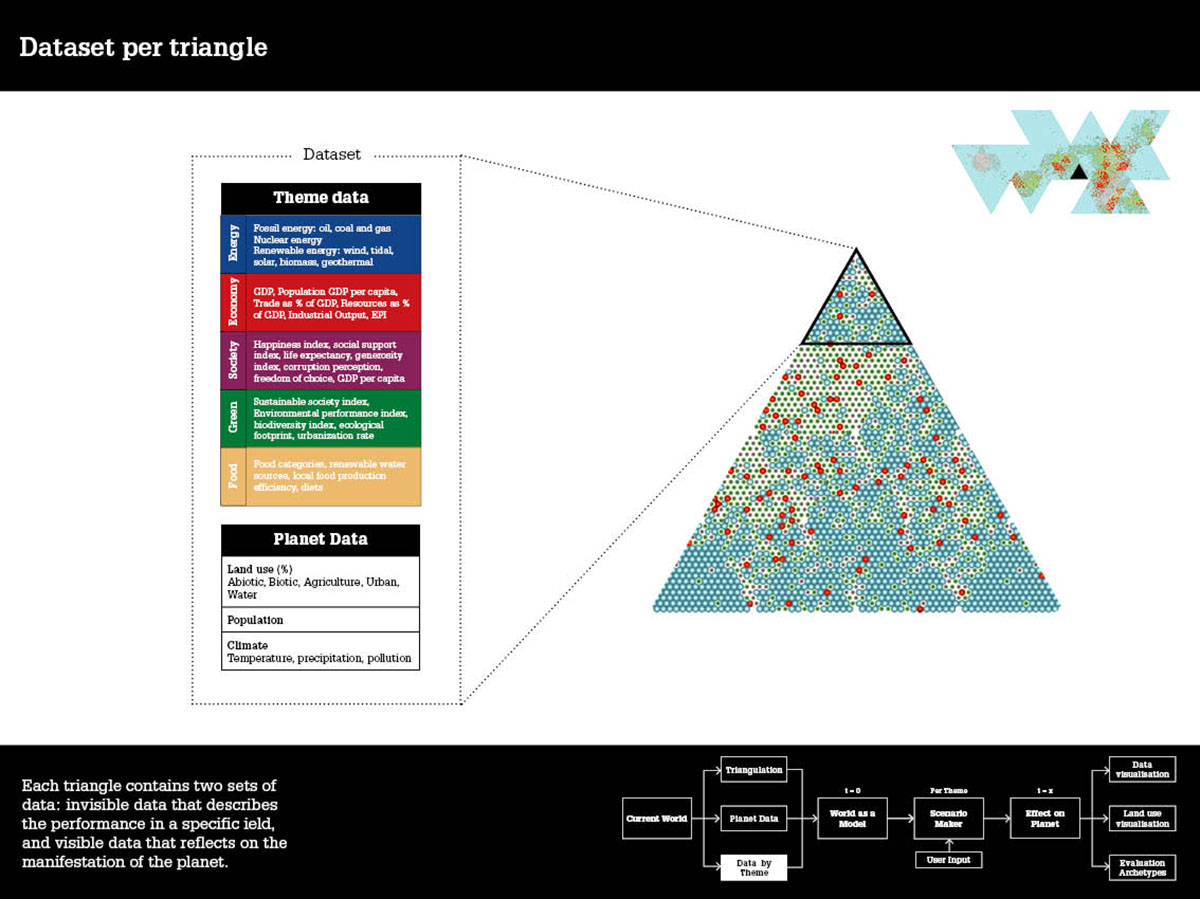
"To visualize the effect of these ‘what if’ scenarios have on a particular location, a series of before and after postcards give the viewer a sense of the experiential impact of the scenario outcomes."
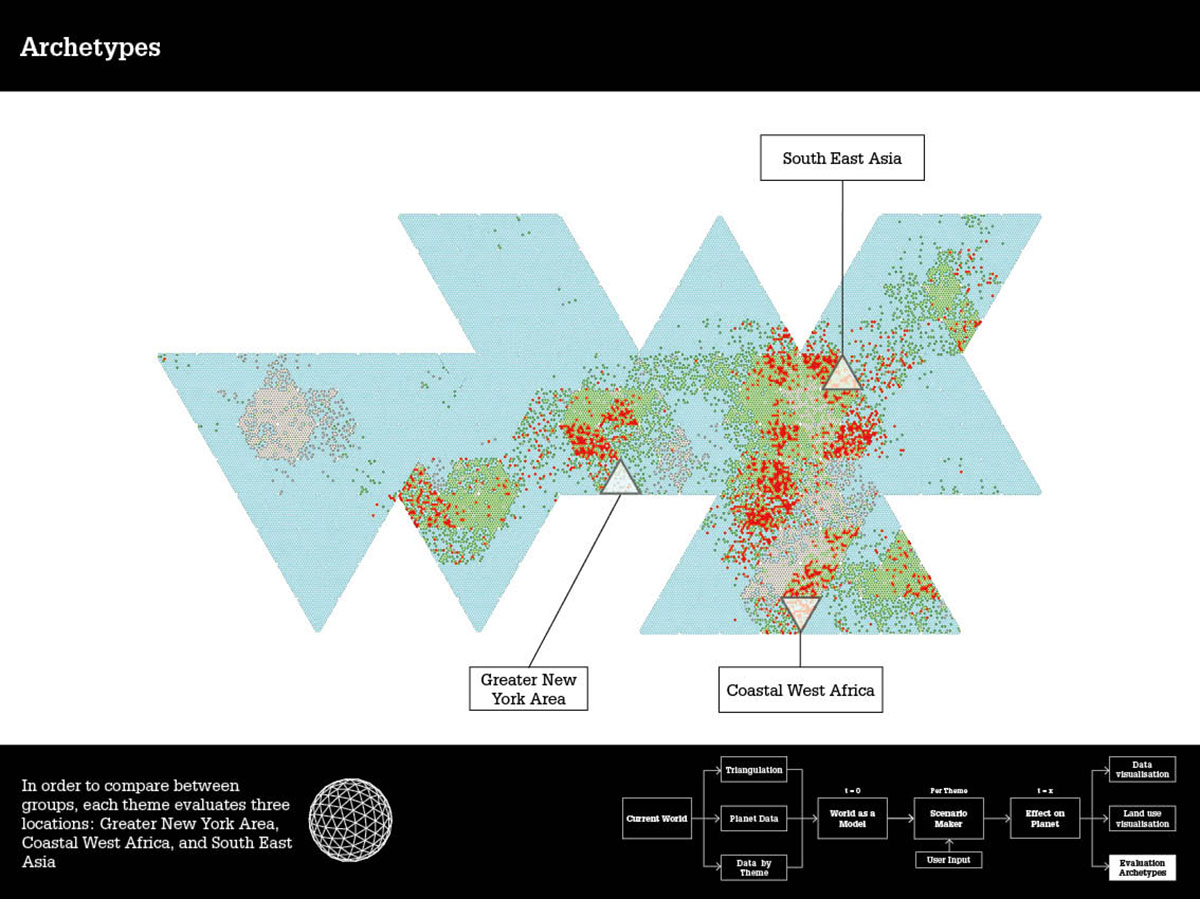
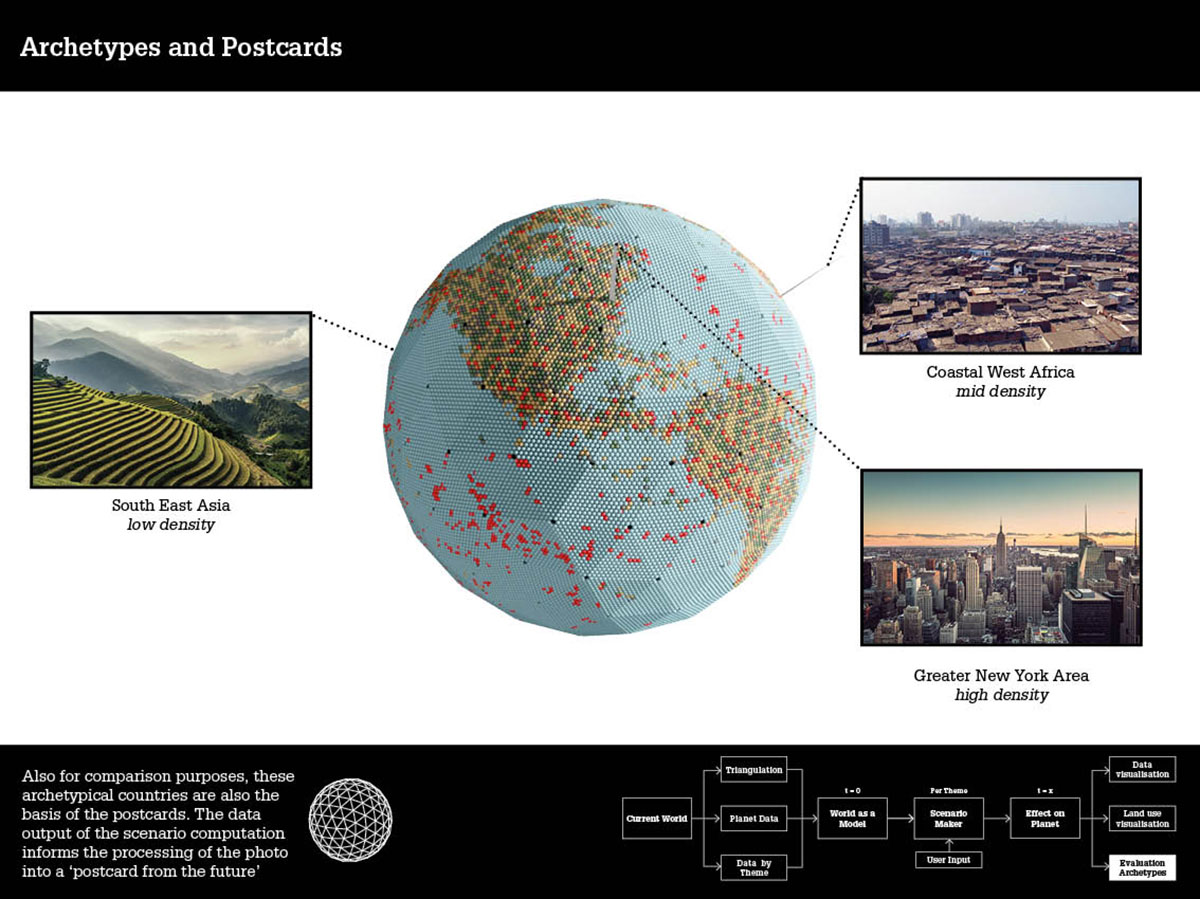
Founded in 2008, The Why Factory serves as a research institution and think-tank for the investigation of future cities within a covered courtyard at the Delft University of Technology, of which Maas is also a graduate. World Architecture Community had spoken with Winy Maas in an exclusive interview, exploring the mission of The Why Factory. The Why Factory continues its well-grounded research and explorations on urbanism for the future of cities.
"I think The Why Factory is a model for worldwide explorations, if not beyond. The institution’s model is disseminated by our themes, by our studios in Delft and elsewhere. All of this is realized only through our researchers and our foundation. We accept Master students to make strong aspirations on aspects of the future city," Maas had said in an exclusive interview by World Architecture Community.
All images courtesy of The Why Factory
> via The Why Factory